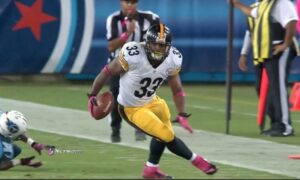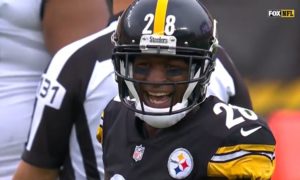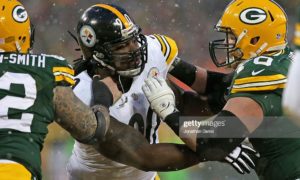By Matthew Marczi
End-of-season player exit meetings are not something that we are often privy to as outsiders of the football world. Generally, we only get a glimpse into that world when a player is asked by a reporter how the meeting went, if the player is willing to discuss it.
Still, it’s not generally a hard concept to grasp, and we have a pretty good feel by now of how Mike Tomlin and his staff likes to operate, and we see all the game film, so it’s not an overly difficult project to simulate. If we were to administer the end-of-season player exit meetings, it might go something like this.
Player: Steve McLendon
Position: Nose Tackle
Experience: 4 Years
The Pittsburgh Steelers in 2013 were tasked for the first time in over a decade to figure out how to stop the run without nose tackle Casey Hampton clogging up the middle of the field. He helped the Steelers to a historically imposing run defense in 2010, the last time Pittsburgh was in the Super Bowl.
That year was also the first season for Steve McLendon, a former undrafted free agent that began at defensive end and entered his first season as the starting nose tackle for the Steelers this past year.
Less physically daunting than his predecessor yet more agile, the Steelers knew going in that McLendon would not be playing the nose tackle position in exactly the same way that they’d been accustomed to.
If you look at the raw numbers, the general impression would be that McLendon must not have played particularly well, as the Steelers gave up 115.6 yards on the ground per game in 2013, which ranked 21st in the league. They also allowed 4.3 yards per carry, which was tied for 21st in the league. To top it off, they allowed 18 rushing touchdowns, which was tied for fifth-most league-wide.
Those numbers don’t exactly tell McLendon’s story, however, in large part because of how frequently the Steelers ran without a nose tackle. McLendon played only 355 snaps last season, many of which (12%) actually came in sub-packages as a defensive tackle with two down linemen.
In other words, much of the rushing production against the Steelers last season came with McLendon on the sidelines. Taking a more in-depth approach indicates that opponents had greater—and more frequent—success on the ground when attacking the perimeter rather than going up the middle. And that is largely because of McLendon.
While he doesn’t (yet) command and navigate consistent double teams quite as easily as more large-bodied nose tackles, McLendon has little issue holding the point. His superior athleticism and mobility for the position allows him to make more plays on his own, as indicated by his 33 tackles in 14 games while playing wildly varying snap counts throughout the year.
One area in which I will say that he did not quite meet expectations would be in what he brought to the pass rush. He started off well in this area, having a strong season opener against a good offensive line, but his production as a pass rusher quickly tailed off. He failed to record a sack after having two last season.
Previous Articles In This Series
Steelers End Of Season Player Exit Meetings – QB Ben Roethlisberger
Steelers End Of Season Player Exit Meetings – WR Antonio Brown
Steelers End Of Season Player Exit Meetings – WR Emmanuel Sanders
Steelers End Of Season Player Exit Meetings – TE Heath Miller
Steelers End Of Season Player Exit Meetings – T Marcus Gilbert
Steelers End Of Season Player Exit Meetings – G David DeCastro
Steelers End Of Season Player Exit Meetings – G Ramon Foster
Steelers End Of Season Player Exit Meetings – T Kelvin Beachum
Steelers End Of Season Player Exit Meetings – RB Le’Veon Bell
Steelers End Of Season Player Exit Meetings – C Fernando Velasco
Steelers End Of Season Player Exit Meetings – FB Will Johnson
Steelers End Of Season Player Exit Meetings – DE Brett Keisel







